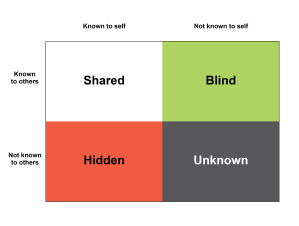
Yahoo HQ, photo from Reuters
Yahoo! CEO Marissa Mayer’s now-famous internal memo announcing the end of telecommuting for her workforce continues to stir outrage, emotion and controversy. She has garnered thumbs downs from The Talk, and a hearty pat on the back from Donald Trump, who, in a less popular opinion, said basically that she has the right to do whatever she thinks is necessary to meet her goals. Others have hailed the decision as no less than pushing back women and families in the workplace two decades. I don’t think all the hype is because of the decision as much as it is about the memo.
All we know (what was reported) about the leaked memo is the decision Mayer made to eliminate telecommuting, which had become, apparently, a staple of the culture and business environment at Yahoo. We don’t know what else the memo said, or if the memo was in addition to internal meetings, discussions with staff, emails, or many other types of internal communication that could have occurred about this same topic. It’s trite because it’s true: how you say something is almost more important than what you say. Your ability to get support or have it ripped from you depends on your ability to finesse, explain, contextualize and engage your audience. Make it their issue, not just yours. Emphasize the all-important what’s in it for them. In my experience, decisions like this are best communicated when they are handled as follows:
1. Show them the money. Explain how profits have slipped and if you can, qnantify the link between your decision and the bottom line. Definitely explain what it means for them (and their paychecks, bonuses, etc) if things don’t improve. Tell them they have the power to make it better. Mayer could have explained that she had done studies of the link between Yahoo’s stock price and profit margins, and workforce productivity. She also could have said she had done studies of productivity levels among staff who telecommute, and in her analysis, productivity could be improved with a reducion in telecommuting. No such studies? I would have recommended that she hold off cutting a deeply held culturally significant program until more data was in.
2. Phase in the changes and layer the communication.
First, clearly state the problem faced by the company and weighing heavily on the CEO (a need to improve profits fast). Tell employees about the studies being done to identify the scope and cause of the problem and when they will hear about the results, and when those are ready, clearly state the results. No need to sugarcoat, but do be respectful and clear. Tell employees the options they have to improve the situation, and always give them options. Involve employees at the appropriate levels and if possible, from all levels of the organization.
Second, once it’s clear that the program is needed, make it less drastic and therefore less shocking to the system, by phasing it in – for example, disallowing telecommuting on certain days of the week, or reducing it by a certain number of hours a week per employee, or let various operating divisions or managers decide how to allot a given number of hours for their teams. Collaboration and empowerment are key to the success of a large scale change initiative.
Third, communicate clearly about results and improvements as you continue to study the effects of the new program (in Mayer’s case, eliminating telecommuting). Be persistent with your gratitude to the employees for participating, for turning around their company. Continue to appeal to their sense of contribution. Everyone loves to be needed; everyone wants to feel like they’re doing a good job.
3. Hold managers accountable, and share the wealth. Announce and follow through that the resulting increase in profits would, in part, be shared companywide. Offer incentives to teams who do the best at creatively embracing the problem, to managers who manage the change best… inspire a spirit of being a team focused on a common goal, from which everyone wins and benefits. Certainly, this will help ease the sting of what they perceive to be a sanction.
4. Embody the change. Ah, and this is why Mayer was criticized most of all. Easy for her to come to the office each and every day and stay long hours … her child was right next to her the whole time in that infamous new nursery she built when she took her new job. So, she could build a daycare center on Yahoo’s campus that opens early and closes late, free of charge to employees. That’s putting your money where your money is… and again, softens the blow for employees.
Again, we (or at least I) don’t know the whole situation – maybe all of the above happened and Mayer is simply the unfortunate CEO of a workforce that just can’t be pleased. More likely, this is a common situation where the C-suite, in a rush and under pressure, forgot the power of communication, especially during times of duress and change. I am all for a CEO’s right to lead the way they think best for their company, and if telecommuting is a “luxury” she feels her company can’t afford right now, that’s up to her (again, we don’t have all the facts she used for her decision). However, CEOs would be well advised to linger a little before hitting “send” on any communication announcing such a huge change.





 nternally driven programs to help your organization work better. Be sure the glamour supports that.
nternally driven programs to help your organization work better. Be sure the glamour supports that.